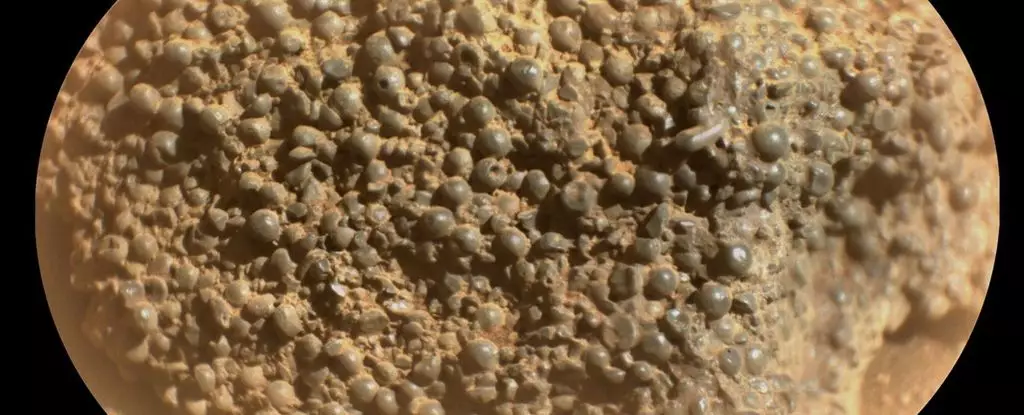Mars continuously captivates scientists and enthusiasts alike with its astonishing geological phenomena. Recently, the Perseverance rover has added yet another layer to the planet’s already rich tapestry of mysteries by discovering an anomalous rock formation dubbed St. Pauls Bay. Situated on the lower slopes of Witch Hazel Hill within the historical confines of Jezero Crater, this rock exhibits striking characteristics, resembling an otherworldly conglomeration reminiscent of frogspawn. Thousands of tiny dark gray spherules, each measuring around a millimeter, come together in an unfamiliar assemblage that has both bewildered and fascinated researchers.
Defying Earthly Comparisons
What sets St. Pauls Bay apart is its lack of resemblance to any known geological formations on Earth. While scientists have labeled the rock formation as “shocking,” the true marvel lies in its origin and composition. On Earth, botryoidal formations—characterized by clusters of spheres—are relatively well understood with clear formation processes. However, Mars’s unique environment raises fundamental questions about how minerals crystallize and interact. St. Pauls Bay is unlike terrestrial instances such as hematite and grape agate, suggesting that its formation might be attributed to entirely different mechanisms. The disparity between terrestrial and Martian geology demands a fresh perspective on how we interpret planetary formations.
Formation Theories and Uncertainties
Understanding the genesis of St. Pauls Bay proves to be a complex puzzle. Scientists propose several potential origins, including rapid cooling of molten rock following a meteorite impact, which can create spherical formations as materials are ejected during the subsequent explosion. Alternatively, there’s the possibility of aqueous interaction, as evidenced by other Martian spherules like the infamous “blueberries.” These hematite-rich concretions suggest that water played a significant role in their formation. The interplay of water and mineral synthesis on Mars has undeniably been a fruitful area of research, yet the ambiguity surrounding St. Pauls Bay’s background remains perplexing.
The Importance of Context in Geological Discoveries
One crucial aspect of studying planetary geology is understanding the context from which specimens originate. In the case of St. Pauls Bay, the fact that it is classified as a “float rock” complicates matters because it has been dislodged from its original site, leaving its formation context in the dark. Scientists know little about the environmental conditions and processes that may have led to its creation, which are crucial in determining whether fire (like that from volcanic activity) or water initiated this rock’s formation. Current orbital observations hint at an adjacent dark layer of rock, suspected to be the formation’s genesis site. This tantalizing clue may lead to exciting revelations about Mars’s geological history if Perseverance can navigate closer for further examination.
A New Era of Exploration Awaits
As curiosity and technological advancements propel us toward a more profound understanding of Mars, the discovery of phenomena like St. Pauls Bay serves as a reminder of how much there is yet to learn. Each enigmatic rock formation adds to our overall knowledge and raises new questions about planetary processes, encouraging further exploration and interrogation into the intricate history of our neighboring planet. The allure of Mars lies not just in what we might find, but in how those findings continuously reshape our understanding of geology, both terrestrial and extraterrestrial.


Leave a Reply